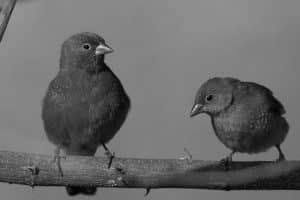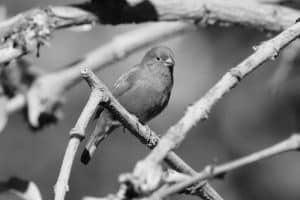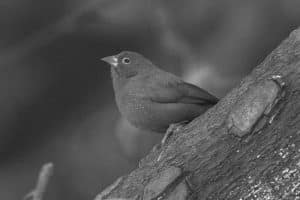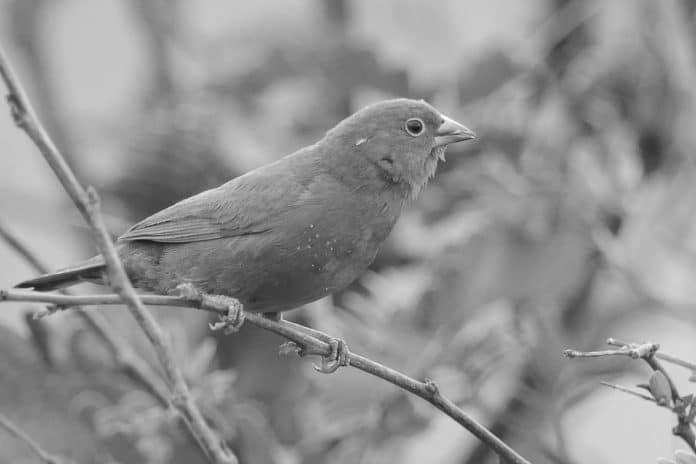Introduction to the Red-Billed Firefinch
The red-billed firefinch in Tanzania, scientifically known as Lagonosticta senegala, is a small, finch-like bird that is native to parts of Africa, including Tanzania. With its striking crimson beak, deep red plumage, and lively personality, this species has become a favorite among birdwatchers and nature enthusiasts alike.
Habitat and Distribution of the Red-Billed Firefinch in Tanzania

In Tanzania, the red-billed firefinch can be found in a variety of habitats, including open woodlands, savannas, and even urban areas. These resilient birds thrive in regions with a mix of grasslands, scattered trees, and access to water sources. Their range in Tanzania extends across the central and northern parts of the country, with populations concentrated in areas like the Serengeti National Park, Tarangire National Park, and the Ngorongoro Conservation Area.
Physical Characteristics and Behavior of the Red-Billed Firefinch
The red-billed firefinch is a small bird, measuring around 4-5 inches in length and weighing just a few grams. The males of the species are the true showstoppers, with their vibrant red plumage and striking crimson beak. Females, on the other hand, have a more subdued brown and grey coloration, but their beauty is no less captivating.
These birds are known for their lively and social behavior, often seen hopping and flitting around in small groups or pairs. They are adept at foraging on the ground, where they search for seeds, insects, and other small invertebrates. Their distinctive call, a series of high-pitched chirps and trills, can often be heard echoing through their habitats.
Breeding and Reproduction of the Red-Billed Firefinch
The red-billed firefinch is a monogamous species, with pairs forming strong bonds that can last for several breeding seasons. During the breeding season, which typically occurs during the rainy months, the male will engage in elaborate courtship displays to attract a mate. This includes singing, fluttering his wings, and even offering the female food.
Once a pair has mated, the female will build a small, cup-shaped nest, often concealed in dense vegetation or a tree cavity. She will lay a clutch of 2-5 eggs, which she will incubate for around 12-14 days. The chicks hatch altricial, meaning they are born helpless and require extensive parental care. Both the male and female will work together to feed and protect the young until they are ready to fledge and become independent.
Conservation Status of the Red-Billed Firefinch in Tanzania
The red-billed firefinch is classified as a species of Least Concern by the International Union for Conservation of Nature (IUCN). This is largely due to its widespread distribution and adaptability to a range of habitats. However, like many bird species, the red-billed firefinch faces some threats, such as habitat loss and degradation, as well as the illegal pet trade.
In Tanzania, conservation efforts are in place to protect the species and its natural habitats. National parks and protected areas, such as the Serengeti and Tarangire, play a crucial role in safeguarding the red-billed firefinch’s populations and ensuring their long-term survival.
Where to Spot the Red-Billed Firefinch in Tanzania

If you’re a birdwatcher or nature enthusiast visiting Tanzania, there are several prime locations where you can spot the enchanting red-billed firefinch. Some of the best areas include:
- Serengeti National Park: This iconic park is home to a diverse array of bird species, including the red-billed firefinch. Look for them in the park’s open woodlands and savannas.
- Tarangire National Park: Known for its large elephant populations, Tarangire also boasts a rich birdlife, with the red-billed firefinch being a common sight.
- Ngorongoro Conservation Area: This UNESCO World Heritage Site is a haven for wildlife, and the red-billed firefinch can be found in the various habitats within the area.
- Lake Manyara National Park: This picturesque park, famous for its flamingos, also provides a home for the vibrant red-billed firefinch.
- Arusha National Park: Although smaller in size, Arusha National Park is a great place to spot the red-billed firefinch, as well as other fascinating bird species.
Tips for Birdwatching and Photographing the Red-Billed Firefinch
Birdwatching and photography in Tanzania can be an incredibly rewarding experience, and the red-billed firefinch is a prime subject. Here are some tips to help you make the most of your encounter with this feathered wonder:
- Invest in a good pair of binoculars or a telephoto lens to get a closer look at the birds.
- Remain quiet and move slowly to avoid startling the birds.
- Familiarize yourself with the bird’s calls and behaviors to increase your chances of spotting them.
- Be patient and persistent – the red-billed firefinch may be elusive, but the payoff of a successful sighting is well worth the effort.
- Respect the birds and their habitat by following all park regulations and guidelines.
Other Bird Species Found in the Same Habitat as the Red-Billed Firefinch
The red-billed firefinch is just one of the many captivating bird species that can be found in the habitats of Tanzania. Some other notable species that share the same environments include:
- Superb Starling
- Lilac-Breasted Roller
- Yellow-Billed Shrike
- Helmeted Guineafowl
- Kori Bustard
- Grey-Headed Kingfisher
- White-Browed Sparrow-Weaver
These birds, along with the red-billed firefinch, create a vibrant and diverse avian community that is sure to delight birdwatchers and nature enthusiasts alike.
Interesting Facts and Myths About the Red-Billed Firefinch
The red-billed firefinch is not just a beautiful bird, but it also has a rich cultural history and a few intriguing facts associated with it:
- The red-billed firefinch is known as the “love bird” in some African cultures, due to its strong pair bonds and affectionate behavior.
- In some regions, the red-billed firefinch is believed to bring good luck and prosperity to those who spot it.
- These birds are known to be excellent mimics, able to imitate the calls of other species with remarkable accuracy.
- The red-billed firefinch is a popular caged bird in parts of Africa, but this practice can be detrimental to wild populations.
- Despite their small size, red-billed firefinches are remarkably hardy and can thrive in a variety of environments, from urban areas to remote wilderness.
Conclusion: Appreciating the Beauty of the Red-Billed Firefinch in Tanzania

The red-billed firefinch is a true gem of the Tanzanian avian world, captivating the hearts and minds of all who are fortunate enough to witness its vibrant beauty. From its striking crimson plumage to its lively and social behavior, this small but mighty bird embodies the essence of the natural wonders that Tanzania has to offer.
As you plan your next adventure in Tanzania, be sure to keep an eye out for the enchanting red-billed firefinch. With a little patience and a keen eye, you might just be rewarded with a glimpse of this feathered marvel. To learn more about birdwatching and other wildlife experiences in Tanzania, be sure to check out our comprehensive travel guides and resources.

































